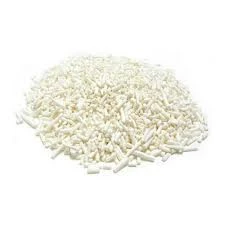
Exploring the Benefits of E635 Flavor Enhancer in Culinary Applications
Understanding E635 The Flavor Enhancer in Your Food
In the world of food additives, E635 is a compound that often goes unnoticed by the average consumer, despite its significant role in enhancing the flavors of various food products. Commonly known as sodium ribonucleotide, E635 is a flavor enhancer that is used in a wide array of processed foods to boost and accentuate their natural flavors. This article will explore what E635 is, how it functions in food products, potential health concerns, and its prevalence in our diets.
What is E635?
E635 is a chemical compound derived primarily from nucleotides, which are the building blocks of nucleic acids. Specifically, it is comprised of sodium salts of 5'-inosinic acid (also known as inosinate) and 5'-guanylic acid (known as guanylate). When combined, these compounds produce a synergistic effect that intensifies the umami flavor—the savory taste that enhances the overall flavor profile of food.
How Does E635 Enhance Flavor?
The primary function of E635 as a flavor enhancer lies in its ability to intensify and enhance the existing flavors of food. It is particularly effective when used in combination with monosodium glutamate (MSG) and other flavor enhancers. The combination produces a more complex taste profile that many consumers find appealing. E635 works by stimulating specific taste receptors on the tongue, promoting a more pronounced umami flavor that tends to linger, making the eating experience more satisfying.
E635 is commonly found in products such as snacks, ready-to-eat meals, sauces, soups, and various seasoning blends. Its ability to improve flavor without significantly altering the food’s nutritional profile makes it a popular choice among manufacturers looking to create enjoyable, palatable products.
e635 flavor enhancer

Health Concerns and Regulatory Status
Like many food additives, E635 has come under scrutiny regarding its health implications. Some studies suggest that excessive consumption of flavor enhancers, including E635, could lead to potential health issues such as obesity, hypertension, and metabolic disorders. However, consumption in moderation is generally considered safe for most individuals.
Regulatory agencies, including the Food and Drug Administration (FDA) and the European Food Safety Authority (EFSA), have evaluated the safety of E635. Both organizations have concluded that E635 is safe for consumption, provided that it is used within approved guidelines. Nonetheless, ongoing research continues to monitor the potential long-term effects of additive consumption, especially as dietary habits evolve.
Conclusion
E635 is a prominent flavor enhancer that plays a vital role in the food industry, making meals tastier and more enjoyable for consumers. Its ability to intensify umami flavors makes it a favorite among food manufacturers and chefs alike. However, as with any food additive, it is essential for consumers to be aware of what they are consuming. Reading food labels, understanding the ingredient list, and consuming processed foods in moderation are practical ways to maintain overall health.
Ultimately, E635 is just one component of a complex food system, one that consistently adapts to meet consumer demands for flavor, convenience, and satisfaction. As we continue to explore our relationship with food and nutrition, additives like E635 remind us of the intricate balance between taste and health. Being informed empowers consumers to make better choices regarding their food intake while still enjoying the rich flavors that modern food processing has to offer.
-
Why Glacial Acetic Acid Food Grade Is Essential in FlavorNewsMay.26,2025
-
Surging Export Growth of Food Additives in ChinaNewsMay.26,2025
-
How Ammonium Nitrate Fertilizer Boosts Crop YieldsNewsMay.26,2025
-
How 1,2,3-Benzotriazole Shields Plastics from UV DegradationNewsMay.26,2025
-
Cyanide in Gold Mining: Protecting People and the PlanetNewsMay.26,2025
-
Aluminum Hydroxide in Modern Sunscreen FormulationsNewsMay.26,2025
-
Understanding Synthetic Rubber OptionsNewsApr.27,2025
Hebei Tenger Chemical Technology Co., Ltd. focuses on the chemical industry and is committed to the export service of chemical raw materials.
-

view more DiethanolisopropanolamineIn the ever-growing field of chemical solutions, diethanolisopropanolamine (DEIPA) stands out as a versatile and important compound. Due to its unique chemical structure and properties, DEIPA is of interest to various industries including construction, personal care, and agriculture. -

view more TriisopropanolamineTriisopropanolamine (TIPA) alkanol amine substance, is a kind of alcohol amine compound with amino and alcohol hydroxyl, and because of its molecules contains both amino and hydroxyl. -

view more Tetramethyl Thiuram DisulfideTetramethyl thiuram disulfide, also known as TMTD, is a white to light-yellow powder with a distinct sulfur-like odor. It is soluble in organic solvents such as benzene, acetone, and ethyl acetate, making it highly versatile for use in different formulations. TMTD is known for its excellent vulcanization acceleration properties, which makes it a key ingredient in the production of rubber products. Additionally, it acts as an effective fungicide and bactericide, making it valuable in agricultural applications. Its high purity and stability ensure consistent performance, making it a preferred choice for manufacturers across various industries.











